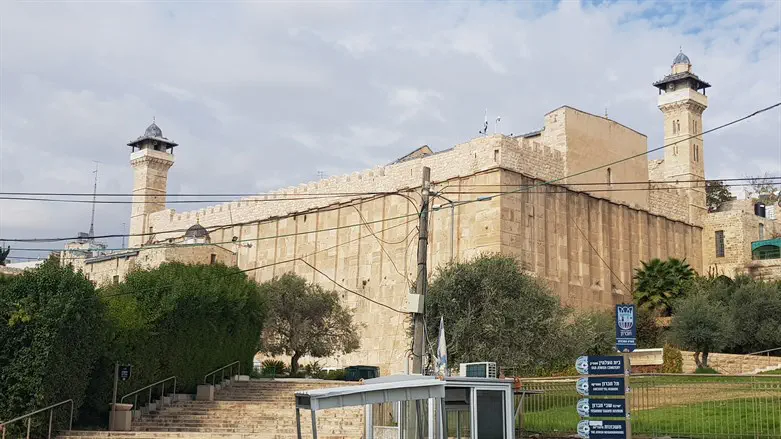
On Purim, 1994, Dr. Baruch Goldstein - an American-born immigrant, loving father, IDF reservist, and dedicated practicing physician - entered the Cave of the Patriarchs in Hebron and opened fire on Muslim worshippers with his IDF Galil rifle. The event, although some have contested its truth, shocked the world at large, was immediately condemned worldwide (as opposed to October 7, 2023) and caused controversies that continue throughout Israel to this day. What happened then, and what has changed since?
Background
The incident took place during the Oslo process and the first Intifada, with some of the Arab attacks on Israelis occurring only a short while before. Goldstein had been involved in the response to some of the attacks - as a doctor and IDF reservist, he was responsible for treating several victims of terror in Hebron. In fact, he was the doctor who entered a Hebron hospital to identify Aharon Gross, a 19-year-old brutally stabbed while waiting for a ride outside Shavei Hebron Yeshiva, kidnapped to an Arab hospital in Hevron, and, as Goldstein reported to his distraught parents, stabbed many times there as well. This may well have been the incident that caused him to wish to avenge Jewish deaths, but it was not the only act of terror he witnessed.
Israel has suffered unbroken waves of terror and the murder of thousands of its innocent civilians, without its citizens taking the law into their own hands to avenge loved ones. The shootings perpetrated by Goldstein stand out as an exception on the background of entire families slaughtered at home, the students on a hike killed in Maalot, the murdered Olympic contestants in Munich, elderly people blown up at a seder in Netanya, terrorist suicide bombers on buses, and countless other victims of Arab terror.
Hebron was at the time experiencing several exacerbating factors that raised tensions in the city. The city itself was a known Hamas stronghold, a reputation that has been lessened only somewhat by more than thirty years of Israeli operations against terrorism in the city. Additionally, the traditionally boisteous celebrations of Purim were underway, as well as the historically volatile Friday prayers of Ramadan. This combination of timings will repeat itself this year.
The ISA's Jewish Department, which had infiltrated the Kach political party with which Goldstein was affiliated, had warned that he was planning an attack on Palestinian Arabs. Other witnesses of the attack, though, claimed that Hamas had been warning its supporters to prepare supplies for significant actions of its own and a lengthy siege to follow.
The Massacre
On Purim morning, Goldstein donned his IDF uniform and went to the Cave of the Patriarchs, armed with his IDF Galil rifle and equipped with several extra magazines. The IDF detail assigned to secure the area was not all present at the time, and did not search him or require him to pass through a metal detector. He attended a reading of the Book of Esther, then moved to the Abraham Hall, at the time being used for Muslim services, and opened fire as the worshippers prostrated themselves in prayer.
After Goldstein had emptied several magazines, and while attempting to insert another one, a worshipper stunned him by striking him on the side of the head with a fire extinguisher. His weapon was seized, and he was beaten to death by the remaining worshippers, although he could have been apprehended alive
Aftermath
Accounts of the immediate aftermath and casualty count vary widely, and the general confusion surrounding the incident has left many details still unclear. Different sources claim anywhere between 29 and 70 worshippers were killed in the Cave itself. Israel counts 29.The number wounded is likewise disputed, varying between 100 and 300.
Palestinan Arab media has made multiple unfounced accusations regarding the severity of the incident that are disputed by Israel, including that Goldstein was aided by other Israeli civilians within the cave, that IDF soldiers shot at those fleeing the cave or in the surrounding streets, that Goldstein had arrived with grenades as well as his rifle, and that additional Palestinian Arabs were shot when Israelis fired on the funeral processions of those killed in the initial shooting.
In the following days, several more Palestinian Arabs were killed or injured in the widespread rioting against the massacre.
A short while afterwards, Hamas carried out two suicide bombings, killing and injuring dozens of Israelis. These included one of the first such attacks against civilian targets outside of Judea and Samaria, which was viewed as a direct response to the attack. Another attack took place when a Lebanese immigrant to the USA fired on a bus full of Jewish students traversing Brooklyn Bridge.
Reactions
Israeli officials from the President and Prime Minister down, and including Benjamin Netanyahu (at the time leading the Likud as an opposition party) condemned the incident. The sentiment was adopted among prominent religious figures both in Israel and around the world, several world leaders, and as part of the UN's Resolution 904. Polls of the public found significant condemnation at the time, although that sentiment has reduced significantly since.
Israel established a commission led by Supreme Court judge Meir Shamgar to investigate the incident. The commission criticized the coordination between Israel's security forces, but did not actually find them complicit in the massacre. It likewise determined that Goldstein had acted alone, and that he did not use any grenades.
Less than two years later, Shamgar would also lead the inquiry into the assassination of Yitzchak Rabin.
In Hebron itself, Israeli forces have since instituted a rigorous system of checkpoints, curfews, and other measures to keep the Israeli and Palestinian Arab populations separated. The system has drawn complaints from both sides that the government is stifling further growth and public freedoms in the city.
Legacy
Today, the Cave of the Patriarchs is fully divided between Muslim and Jewish prayers, with restricted access from one side to the other save for certain days of the year. The Kach party, in which Goldstein had been an active member, has been banned in Israel, as was a subsequent party named Kahane Chai. A shrine over Goldstein's grave was dismantled by the IDF following legislation outlawing monuments to terrorists. Despite this, large pilgrimages to his grave on or near Purim are not uncommon.
Several right-wing politicians, including MK Itamar Ben-Gvir (Otzma Yehudit) have been accused of overly endorsing Goldstein's actions. Ben-Gvir also displayed a photo of Goldstein in his home, although he pledged to remove it.
As a result of the attack, Israel's security forces began developing a concept of a Jewish act of terror against Palestinian Arabs with significantly more urgency, although they continue to be few and far between. Some of Goldstein's associates or members of groups deemed to have supported his actions were disarmed and placed in administrative detention. The Jewish Department of the ISA, widely seen as having been responsible for the failure to warn of the impending attack, began a more aggressive doctrine of highly debated preventative action against similar incidents, with policies still in use today.
Looking Forward
The Swords of Iron war introduced an unprecedented level of tensions to Hebron, which will this year combine with the exact same timing as the original massacre, and is even further exacerbated by the hostage negotiations, Operation Walls of Iron, recent clashes between Israelis and Palestinian Arabs in the surrounding towns, and online resentment against Israeli security measures.
Right-wing social media in Israel, reacting to October 7 and the suffering of the hostages still alive, have recently begun praising Goldstein and calling for a larger pilgrimage to his grave, with some describing his actions as 'preemptive', 'vengeance', and 'defensive', as well as calling for acts of violence to drive Palestinian Arabs out of Hebron.
The ISA has warned that Hamas is working to inflame the public as well, and noted in their recent investigations of the war that the greatest threat was long assumed not to be from Gaza, but a significant outbreak of hostilities in Judea and Samaria. With Gaza having suffered heavy casualties and the bulk of Operation Walls of Iron having been thus far focused on northern Samaria, Hebron could once again be among the greatest security threats to Israel.
